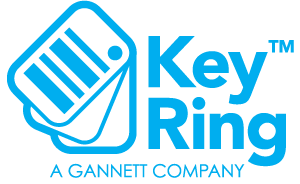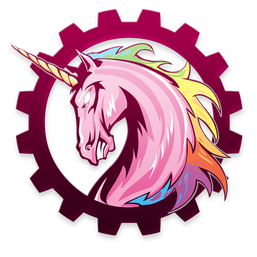
Mobile payment, also referred to as mobile money, mobile money transfer and mobile wallet, is any of various payment processing services operated under financial regulations and performed from or via a mobile device. Instead of paying with cash, cheque, or credit card, a consumer can use a payment app on a mobile device to pay for a wide range of services and digital or hard goods. Although the concept of using non-coin-based currency systems has a long history, it is only in the 21st century that the technology to support such systems has become widely available.

Near-field communication (NFC) is a set of communication protocols that enables communication between two electronic devices over a distance of 4 centimetres (1.6 in) or less. NFC offers a low-speed connection through a simple setup that can be used for the bootstrapping of capable wireless connections. Like other proximity card technologies, NFC is based on inductive coupling between two electromagnetic coils present on a NFC-enabled device such as a smartphone. NFC communicating in one or both directions uses a frequency of 13.56 MHz in the globally available unlicensed radio frequency ISM band, compliant with the ISO/IEC 18000-3 air interface standard at data rates ranging from 106 to 848 kbit/s.

A QR code is a type of two-dimensional matrix barcode, invented in 1994, by Japanese company Denso Wave for labelling automobile parts. A QR code consists of black squares arranged in a square grid on a white background, including some fiducial markers, which can be read by an imaging device, such as a camera, and processed using Reed–Solomon error correction until the image can be appropriately interpreted. The required data are then extracted from patterns that are present in both the horizontal and the vertical components of the QR image.
Proximity marketing is the localized wireless distribution of advertising content associated with a particular place. Transmissions can be received by individuals in that location who wish to receive them and have the necessary equipment to do so.

High Capacity Color Barcode (HCCB) is a technology developed by Microsoft for encoding data in a 2D "barcode" using clusters of colored triangles instead of the square pixels conventionally associated with 2D barcodes or QR codes. Data density is increased by using a palette of 4 or 8 colors for the triangles, although HCCB also permits the use of black and white when necessary. It has been licensed by the ISAN International Agency for use in its International Standard Audiovisual Number standard, and serves as the basis for the Microsoft Tag mobile tagging application.
Mobile tagging is the process of providing data read from tags for display on mobile devices, commonly encoded in a two-dimensional barcode, using the camera of a camera phone as the reader device. The contents of the tag code is usually a URL for information addressed and accessible through Internet.

UC Browser is a web browser developed by mobile internet company UCWeb, a subsidiary of the Alibaba Group. It was the most popular mobile browser in India, Indonesia, and Mali, as well as the second-most popular one in China as of 2017. Its world-wide browser share as of May 2022 is 0.86% overall according to StatCounter.
Asset tracking refers to the method of tracking physical assets, either by scanning barcode labels attached to the assets or by using tags using GPS, BLE, LoRa, or RFID which broadcast their location. These technologies can also be used for indoor tracking of persons wearing a tag.

The Samsung Galaxy Tab 7.0 or simply Samsung Galaxy Tab is an Android-based mini-tablet computer produced by Samsung and released on 5 November 2010. The tablet was first introduced on 2 September 2010 at the IFA in Berlin. The Galaxy Tab was the first Samsung Android-powered tablet to be released.

The Tablet S is a tablet computer released by Sony in September 2011. Featuring a "unique asymmetric design", the Tablet S runs Google's Android 3.2 Honeycomb operating system and features a 9.4 in (240 mm) multitouch display, 1 GHz Nvidia Tegra 2 dual core processor, Wi-Fi ability, front- and rear-facing cameras, Bluetooth, and an infrared sensor. It is also configured with access to the Sony Entertainment Network and is PlayStation Certified and DLNA compatible. Tablet S was Sony's first modern tablet computer. It was succeeded by the Xperia Tablet S, which would be created by Sony's new subsidiary Sony Mobile.
Miracast is a wireless communications standard created by the Wi-Fi Alliance which is designed to transmit video and sound directly from devices to display receivers. It can roughly be described as "HDMI over Wi-Fi", replacing cables in favor of wireless. The protocol is utilised in many devices and is used or branded under various names by different manufacturers, including Smart View and AllShare Cast, SmartShare, screen mirroring, Cast, wireless display and screen casting.
Microsoft mobile services are a set of proprietary mobile services created specifically for mobile devices; they are typically offered through mobile applications and mobile browser for Windows Phone platforms, BREW, and Java. Microsoft's mobile services are typically connected with a Microsoft account and often come preinstalled on Microsoft's own mobile operating systems while they are offered via various means for other platforms. Microsoft started to develop for mobile computing platforms with the launch of Windows CE in 1996 and later added Microsoft's Pocket Office suite to their Handheld PC line of PDAs in April 2000. From December 2014 to June 2015, Microsoft made a number of corporate acquisitions, buying several of the top applications listed in Google Play and the App Store including Acompli, Sunrise Calendar, Datazen, Wunderlist, Echo Notification Lockscreen, and MileIQ.
This is a comparison of mobile operating systems. Only the latest versions are shown in the table below, even though older versions may still be marketed.

The first-generation iPad is a tablet computer designed and marketed by Apple Inc. as the first device in the iPad lineup of tablet computers. The device features an Apple A4 SoC, a 9.7 in (250 mm) touchscreen display, and, on certain variants, the capability of accessing cellular networks. Using the iOS operating system, the iPad can play music, send and receive email and browse the web. Other functions, which include the ability to play games and access references, GPS navigation software and social network services can be enabled by downloading apps.

Key Ring is a smartphone application owned by Gannett, Inc. that allows users to digitally store loyalty cards, enroll in new loyalty programs, receive localized offers on their smartphone, browse weekly sales circulars, and create digital shopping lists.

AOKP, short for Android Open Kang Project, is an open-source replacement distribution for smartphones and tablet computers based on the Android mobile operating system. The name is a play on the word kang and AOSP. The name was a joke, but it stuck. It was started as free and open-source software by Roman Birg based on the official releases of Android Open Source Project by Google, with added original and third-party code, features, and control.

AlterGeo, formerly known as Wi2Geo, is a Russian IT company specializing in the development of a global hybrid positioning system which combines Wi-Fi, WiMAX, GSM, GPS, LTE, IP address and network environment approaches. It also created cross-platform location-based services Gvidi and AlterGeo, and hyperlocal banner ad system Local Hero.
Ringo was an international calling app for smartphones that utilized dedicated phone circuits for making calls. Ringo used local phone networks instead of the user's smart phone's Internet connection to connect calls. The caller, but not the called party, downloaded and used the app to make calls. Apps were available for Android, iOS, and Windows Phone. Ringo launched in 2014 and was available for use in many countries, though not all supported all three calling methods:- callout, callback and WiFi. Calls could be made to mobile and landline phones in any country. Ringo was discontinued on March 31, 2021.

Google Lens is an image recognition technology developed by Google, designed to bring up relevant information related to objects it identifies using visual analysis based on a neural network. First announced during Google I/O 2017, it was first provided as a standalone app, later being integrated into Google Camera but was reportedly removed in October 2022. It has also been integrated with the Google Photos and Google Assistant app and with Bard as of 2023.

Google Messages is a text messaging software application developed by Google for its Android and Wear OS mobile operating systems, while it's also available via the Web.











